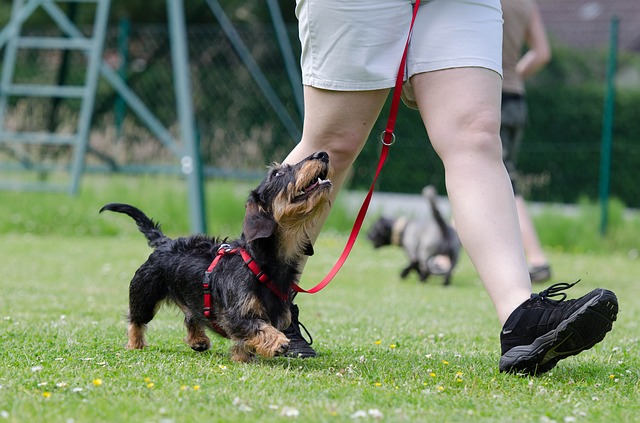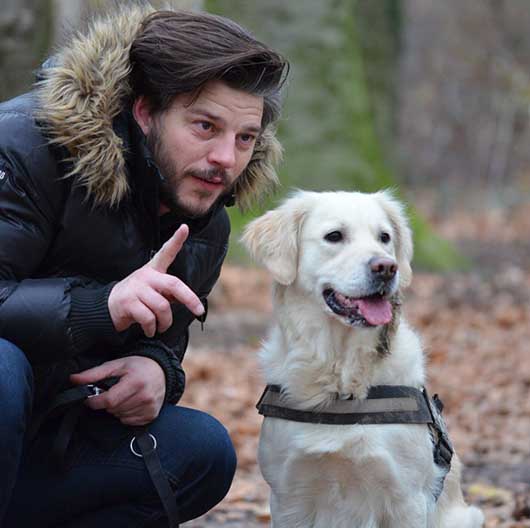Finding a great dog trainer isn’t easy. Avoiding bad dog trainers, sadly, isn’t easy either.
There are many articles out there about how to choose a dog trainer. I like the information from Dr Zazie Todd.
Unfortunately, there is no regulation in our industry. Anyone can hang up a shingle and call herself a dog trainer without any training, credentials, or even basic knowledge about dog behavior. This can make it challenging for consumers to choose someone who is effective and uses humane methods.
To find a great dog trainer
Ask about training methods. If the trainer uses language involving rewarding good behavior and teaching the dog what we do want instead of what we don’t want…you may have found a great dog trainer.
If they talk about energy, dominance, submission, or being alpha, they are not grounded in science and usually lack credentials.
If you take nothing else from this article, let it be this:
If something makes you uncomfortable, it’s ok to say no and walk away.
You are your dog’s best advocate.
Positive Reinforcement Trainers (Including Clicker Training)

Understanding Dog Training uses positive reinforcement. I will never use fear, pain, or force with your dog.
Positive reinforcement training can be puzzling to clients, “if my dog is being naughty, how is feeding him treats going to help?”
That is such a great question! And there are a few ways to answer it.
Fearful Dogs
Sometimes, fear can look like naughtiness. Fearful dogs can growl, snarl, and even bite. Fearful dogs have a bad association with some types of stimuli. A dog that is fearful of strangers may go ballistic. The dog is trying to get the scary person to back away. Aggressive posturing does generally convince people to step back! So being scary works, from the dog’s point of view.
Trainers who deal with this by shocking the dog or jerking on a collar, or using other corrective measures can shut down the scary behavior temporarily. But what the dog has learned is, there really is something to be afraid of. That continued fear may pop out in other directions. Or you may end up teaching the dog that the aggressive displays result in pain or more fear, and you could end up with a dog that bites without warning.
We can treat fear by creating positive associations with the scary thing. It may look like we are rewarding bad behavior but what the dog is actually learning is, “wow, that thing I thought was scary? It’s not only not scary! It’s AWESOME because when I see that thing, I get chicken!! I’m so happy when I see that thing now!”
Pestering and Annoying Dogs
Clients sometimes say, “what if the naughty behavior isn’t about fear. What about dogs that jump on people? Or dogs that beg at the table? Or bark along the fence line? Are you going to give them treats too?”
That would indeed, be rewarding bad behavior. And that is not how positive reinforcement trainers handle these problems.
What we do is teach the dog what we do want and ask them to do that instead. Most of the time, we train things that are incompatible with what we don’t want the dog to do.
A dog that begs at the table can learn to go lay quietly on his mat during meal time. (A dog can’t beg while sitting on his mat.)
A dog that jumps up to greet people, can learn to sit politely to greet people. (A dog can’t sit and jump at the same time!)
So we reward what we do want. And the stuff we don’t want goes away without punishment.
Positive reinforcement trainers teach the dog to make the right choices.
Some positive trainers may state that they subscribe to LIMA (Least Invasive, Minimally Aversive) or follow the Humane Hierarchy. Many, but not all positive reinforcement trainers will use clicker training.
Balanced Trainers
Balanced is a word with a lot of positive connotations. Dictionary.com defines it as “being in harmonious or proper arrangement or adjustment, proportion, etc.” It brings up notions of equilibrium, symmetry, and training that is even-handed.
But what does it really mean in dog training?
Balanced trainers use rewards and punishments. Desired behaviors are rewarded. Undesired behaviors are punished.
This has instinctive appeal to people.
Punishing behavior we don’t like can feel rewarding to the human. Kneeing a dog in the chest for jumping on people may feel good to the person doing the kneeing. But it risks the dog learning that new people are scary and unpredictable.
Sometimes, punishment works. And that can feel rewarding to the person who has administered it.
But there can often be unintended consequences. This can include creating fear in the dog, creating aggression (the dog figures “I will hurt you back or I will hurt you first”), and even injuries to the dog.
With a deep understanding of dog behavior, we have the ability to create profound changes without resorting to punishment. I won’t risk it with your dog. And would encourage you to not do so either.
Dominance Theory Trainers (Put the Alpha Dog in His Place)
Cesar Milan has has the erroneous theory that aggressive dogs are striving to become the alpha in the household and humans need to put them in their place or else the dog will run the house.
While the theory has a lot of appeal to humans, it turns out that aggression isn’t caused by dogs wanting to be dominant, and dogs don’t really want to run the house.
The theory behind dominance training has its roots in a study of wolves in captivity in the 1930-40 time period. Further work was carried further in the 1970s by David Mech. Mech indicated that there were problems in the research in that wolves in captivity don’t behave the same as wild wolves. Also, dogs aren’t wolves. There are many behavioral differences between wild or captive wolves and domestic dogs.
The American Veterinary Society of Animal Behavior (AVSAB) has issued a Position Statement on the Use of Dominance Theory in Behavior Modification of Animals.
Dog Behaviorists
Many people use this term to reference dog trainers who specialize in behavior problems. But many trainers without qualifications will claim this title and it can also be misleading. Applied Animal Behaviorists have Master’s or Doctorate degrees.
There are also Veterinary Behaviorists who have done further work in their veterinary studies and focus on helping animals with behavioral issues. They are similar to a psychiatrist in the human world. They often work together with trainers to help your dog.
Other Training Philosophies
There are many trainers who either use an invented trademarked name for their methods or who will tell you that they base their methods on the individual needs of the dog. It’s hard to advise you on how to evaluate trainers who don’t outright state they adhere to one of the above theories.
Dog Training Schools
While it’s not a guarantee, you may be more likely to find a great dog trainer, if you find someone with one of the credentials below.
- The Academy for Dog Trainers (my school) – this is a 2-year comprehensive program
- Karen Pryor Academy (KPA)
- CATCH Canine Trainers Academy
- Victoria Stilwell Academy
Continuing Education
Dog trainers should be continually honing their craft and developing their skills. Aside from certifications, look for someone who is actively pursuing ongoing education.
Dog Training Certifications and Memberships
Membership or certifications by any of these organizations may be a sign that you’ve found a great dog trainer. Some credentials to look for include: CTC, KPA CTP, VSA-CDT, VSPDT, PMCT CAAB, and ACAAB.
- Pet Professionals Guild membership doesn’t necessarily infer training but members have promised to not hurt or scare dogs.
- International Association of Animal Behavior Consultant (IAABC)
- Certified Council for Professional Dog Trainers
If you need help training your dog, and you’re in the Sacramento area, I use positive reinforcement methods grounded in science. I’d love to talk with you.
If you’re outside of Sacramento and you need help finding a good trainer, drop me a line and I will do my best to help you.
